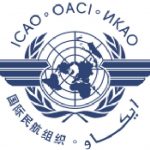FAA Rules Aside, U.S. Shops Prepare For SMS
By Sean Broderick, Aviation Week Network
The FAA remains undecided about whether to require organizationwide safety management systems for its 5,000 certified repair stations, but the global footprint of many U.S.-based shops leaves them with no choice.
Transport Canada (TC) and the European Union Aviation Safety Agency (EASA) both require safety management systems (SMS) for MRO shops. TC’s mandate does not cover all shops now, but that will soon change. EASA’s requirement kicks in this December, when MRO providers are expected to have their SMS implemented.
Neither regulator is stopping at a domestic mandate. The next update to maintenance annex guidance (MAG) that supplements the U.S.-European Union aviation safety bilateral is expected to include SMS requirements for more than 1,000 U.S.-based shops with EASA approval. MAG 10, as it is called, is slated for publication this year, with a likely implementation date in 2025.
The good news for affected U.S. shops: EASA is expected to agree that an SMS meeting the FAA’s current voluntary standards will suffice. About 20 U.S.-based shops have an approved SMS, and 50 more are setting them up or awaiting the FAA’s sign-off.
TC, an early SMS adopter among regulators, has required them for most large certificate holders for more than a decade. In the maintenance world, the mandate started with shops that serve airlines. The regulator is both revamping and expanding its SMS mandate.
Among the certificate holders expected to be affected by expansion are smaller maintenance organizations, including component shops, TC Chief of Operational Airworthiness Jeffrey Phipps said at the recent Aeronautical Repair Station Association (ARSA) conference. He also confirmed that TC plans to work SMS requirements into bilateral agreements.
“All of our international agreements are being updated to include SMS as part of any revision or any new agreement,” he said.
TC has no timeline on the SMS expansion, but a revamp of its requirements is underway.
Canada’s early foray into SMS for aviation meant its certificate holders would generate many of the initial lessons learned. A 2018 evaluation of SMS performance in Canada helped codify these lessons and guide TC in improving its regulations.
Among the key takeaways: Integrating SMS into different parts of the regulations, such as listing airline SMS requirements in Canadian Aviation Regulations (CAR) Part 700’s Commercial Air Services chapter, is too cumbersome. Instead, TC will consolidate them within CAR Part 107’s SMS chapter.
“The thought moving forward is that CAR 107 will be developed [and] simplified, and it will be the stand-alone SMS requirement for Transport Canada,” Phipps said. “So depending on the certificate you have in the future, those certificate holders will be required to comply with CAR 107 instead of putting SMS into each certificate regulatory framework.”
TC also will move away from tailoring SMS to be scalable. While many saw scalability as vital during the development of SMS, the current view is that a single set of clear standards with sufficient guidance is most important. Organizations of different sizes may use various methods to meet the rules, but the standards themselves should be consistent.
What will the standards look like? One good bet is that they will emphasize embedding SMS throughout an organization, including in business-only functions that seemingly lack any direct ramifications on a company’s aviation safety-related functions. Another is that they will stress front-line training.
Simply put, an SMS is effective only if the entire organization, especially top management, supports it unequivocally and front-line workers understand it clearly.
The ramifications of getting this wrong are detailed in a March 2024 report by 24 industry subject matter experts brought together to review Boeing’s safety culture, including its voluntary SMS. The panel found that Boeing’s SMS aligns well with accepted standards, notably International Civil Aviation Organization Annex 19, which lays out the basics of what one should contain. But most of Boeing’s documentation does a poor job of explaining SMS concepts to employees or helping them understand their role.
The panel’s final report contains 53 recommendations, 17 of which address SMS-related shortcomings or improvement opportunities. The FAA, which has fixed its safety-related spotlight on Boeing after a string of quality-related problems pointing to organizationwide issues, gave the manufacturer until the end of May to craft a plan addressing the panel’s recommendations.
As for the U.S. agency, it is busily wrapping up its latest SMS rule, which will apply to manufacturers, among others. An SMS has long been required for airlines, and the voluntary programs for others, including MRO shops, are important for international harmonization. While the expert panel’s report largely targeted Boeing, it contains FAA-centric recommendations the agency plans to heed.
“We are going to take that from an agency perspective and take it on as an agency initiative,” Dan Elgas, acting deputy director of the FAA’s Policy and Innovation Division, told an ARSA audience. “We are going to use what’s in that report to influence how we implement SMS and how we address the recommendations.”




